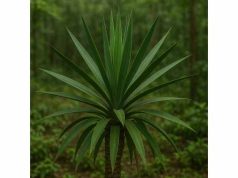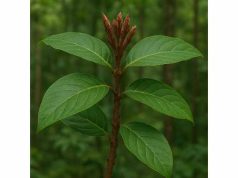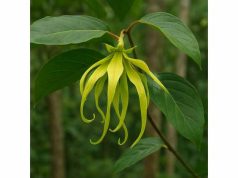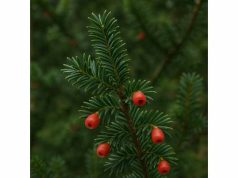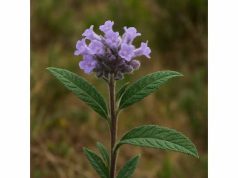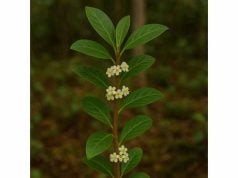
Yerba Buena (Clinopodium douglasii), prized for its refreshing minty aroma, boasts a rich history in traditional medicine across the Americas. Its leaves and stems contain potent flavonoids, essential oils like menthol and pulegone, and tannins that offer antioxidant, anti-inflammatory, antispasmodic, and antimicrobial effects. From soothing digestive upsets and alleviating headaches to calming respiratory irritations and supporting skin health, Yerba Buena Benefits span internal and external applications. Whether brewed as a revitalizing tea, distilled into aromatic oils, or incorporated into topical salves, this versatile herb delivers multifaceted healing properties and practical Uses that blend time-honored wisdom with modern herbal insights.
Table of Contents
- Botanical Framework and Natural Habitats
- Phytochemical Insights and Principal Constituents
- Therapeutic Advantages and Essential Traits
- Applications and Safety Considerations
- Scientific Studies and Key Findings
- FAQ
Botanical Framework and Natural Habitats
Yerba Buena, whose name means “good herb” in Spanish, is a low-growing perennial in the Lamiaceae (mint) family known scientifically as Clinopodium douglasii. It typically forms patches of branching stems 10–30 cm tall, adorned with opposite, ovate to lanceolate leaves measuring 1–3 cm in length. The foliage, bright green and slightly pubescent, releases a crisp mint fragrance when crushed. Tiny pale pink to lavender tubular flowers bloom in clusters at stem axils from late spring through early fall, attracting bees and hummingbirds.
- Taxonomy & Classification
- Kingdom: Plantae
- Order: Lamiales
- Family: Lamiaceae
- Genus: Clinopodium
- Species: douglasii
- Morphological Characteristics
- Stems: Square, characteristic of mints, often slightly hairy and sometimes tinged with purple.
- Leaves: Opposite arrangement, serrated margins, intensely aromatic due to glandular trichomes that hold essential oils.
- Flowers: Small, bilabiate corollas with a two-lipped tube; lower lip often bears nectar guides that lure pollinators.
- Native Range & Distribution
- Yerba Buena is indigenous to the western regions of North America, from southern Alaska through British Columbia and down to California and parts of the southwestern United States.
- It thrives in shaded, moist woodlands, stream banks, coastal bluffs, and shaded paths.
- Cultivation Requirements
- Light: Prefers partial to full shade; direct sun can stress the plant in hotter climates.
- Soil: Moist, well-drained loamy soils rich in organic matter; pH 6.0–7.5.
- Propagation: Easily propagated from runners (rhizomes) or stem cuttings; seeds require stratification for germination.
- Ecological Role: Provides early-season nectar for solitary bees and hummingbirds; groundcover helps stabilize soil under tree canopies.
- Identification Tips
- The unmistakable mint scent when leaves are rubbed distinguishes Yerba Buena from lookalikes.
- Unlike invasive mints, C. douglasii remains localized, spreading slowly via shallow rhizomes.
Imagining a misty forest floor, one might glimpse the bright green mats of Yerba Buena carpeting the shaded ground, the air tinged with minty freshness and the hum of bees dancing among its delicate blossoms. This botanical charm not only pleases the senses but underpins centuries of herbal use.
Phytochemical Insights and Principal Constituents
Yerba Buena’s medicinal virtues derive from an intricate suite of phytochemicals woven into its leaves, stems, and flowers. These active constituents include essential oils, flavonoids, tannins, and phenolic acids that synergize to produce broad therapeutic effects.
- Essential Oils (Menthol, Pulegone, Thymol)
- Profile: Comprising 1–3% of leaf weight, these volatile compounds lend the classic minty character.
- Actions:
- Menthol acts as a cooling analgesic on skin and mucous membranes, alleviating headaches and muscle tension.
- Pulegone exhibits antispasmodic and mild antimicrobial properties.
- Thymol provides antiseptic and anti-inflammatory benefits when applied topically or inhaled.
- Flavonoids (Apigenin, Luteolin, Quercetin)
- Profile: Polyphenolic pigments abundant in aerial tissues.
- Actions:
- Potent antioxidants that scavenge free radicals, protect cells from oxidative stress, and strengthen capillaries.
- Anti-inflammatory modulators by inhibiting pro-inflammatory enzymes (COX, LOX).
- Phenolic Acids (Rosmarinic Acid, Caffeic Acid)
- Profile: Key constituents that contribute to antioxidant capacity.
- Actions:
- Inhibit lipid peroxidation, support healthy immune responses, and display antiviral and antibacterial effects in vitro.
- Tannins
- Profile: Hydrolyzable tannins in leaves and stems.
- Actions:
- Astringent properties that tighten tissues, reduce secretions, and soothe mild gastrointestinal irritation when consumed or applied externally to weeping skin.
- Saponins
- Profile: Glycosides that foam in water extracts.
- Actions:
- Mild mucolytic and expectorant, supporting respiratory clearance; also enhance the absorption of other bioactives.
- Trace Minerals (Magnesium, Calcium, Potassium)
- Profile: Present in leaf cell sap.
- Actions:
- Essential cofactors in enzymatic reactions, support muscle relaxation, and balance electrolyte levels when tea is consumed regularly.
These Yerba Buena Active Compounds do not act in isolation. The cooling menthol complements flavonoid-driven anti-inflammation, while tannins provide barrier support and rosmarinic acid amplifies antimicrobial defenses. This phytochemical harmony is what underlies the herb’s varied healing properties.
Therapeutic Advantages and Essential Traits
Yerba Buena Benefits encompass multiple systems—digestive, respiratory, musculoskeletal, and dermal—thanks to its multifaceted phytochemical profile.
- Digestive Comfort & Spasm Relief
- Menthol and pulegone relax smooth muscle in the gastrointestinal tract, alleviating cramps, bloating, and indigestion. The bitter notes from flavonoids stimulate bile flow, enhancing fat digestion.
- Respiratory Support & Expectorant Action
- Inhaled steam from Yerba Buena tea opens nasal passages, soothes irritated airways, and the saponins help loosen mucus, easing coughs and mild bronchial congestion.
- Analgesic & Cooling Relief
- Topical application of menthol-rich infusions or salves provides a cooling sensation that interrupts pain signals, effective for tension headaches, muscle aches, and minor joint discomfort.
- Anti-Inflammatory & Antioxidant Defense
- Flavonoids and rosmarinic acid mitigate inflammation by inhibiting pro-inflammatory cytokines, supporting recovery from sprains, strains, and inflammatory skin conditions like eczema.
- Antimicrobial & Wound Healing
- Thymol and rosmarinic acid confer antiseptic action, reducing bacterial load in minor cuts and insect bites; combined with tannins’ astringency, they form a protective barrier that fosters healing.
- Anxiolytic & Mood Support
- The ritual of brewing and sipping aromatic Yerba Buena tea induces relaxation; menthol and flavonoids may modulate GABAergic pathways, promoting calm and reducing mild anxiety.
- Circulatory and Vascular Integrity
- Quercetin and luteolin strengthen capillaries and regulate endothelial function, supporting healthy blood pressure and reducing edema in mild peripheral circulatory issues.
- Skin Toning & Cosmetic Applications
- Astringent and antioxidant components tighten pores, protect against environmental stressors, and soothe redness, making Yerba Buena extracts valuable in natural skincare serums and toners.
- Metabolic & Detox Support
- Bitter constituents stimulate digestive enzymes and bile flow, aiding liver detoxification pathways and supporting metabolic balance when integrated into cleansing regimens.
- Oral Health
- Chewing fresh leaves or using cooled infusion as a rinse helps freshen breath, reduce oral microbial populations, and soothe gum inflammation.
These core attributes illustrate how Yerba Buena Properties weave into daily wellness—from easing a digestive upset after a heavy meal to lifting mood on a stressful day, to tending a small scrape with natural antiseptic qualities.
Applications and Safety Considerations
Effective utilization of Yerba Buena Uses demands proper preparation, dosing, and awareness of precautions to ensure maximum benefit with minimal risk.
Internal Preparations & Dosage
- Classic Herbal Infusion
- Recipe: Steep 1–2 teaspoons (≈2–4 g) dried leaves in 250 mL boiling water for 5–10 minutes. Strain and sip warm, up to three cups daily for digestive support, respiratory comfort, or calming anxiety.
- Concentrated Tincture
- Recipe: Macerate 50 g fresh or 25 g dried herb in 250 mL 45% ethanol for 10–14 days, shaking daily. Strain.
- Dosage: 20–30 drops (≈1 mL) in water, 2–3 times daily before meals to harness digestive stimulant and antimicrobial actions.
- Syrup & Elixir
- Recipe: Combine strong infusion (250 mL) with 100 g honey. Heat to dissolve, cool, and bottle.
- Dosage: 1 teaspoon as needed for sore throat relief or cough support, suitable for teens and adults.
Topical & External Applications
- Cooling Compress
- Soak a clean cloth in warm Yerba Buena tea and apply to forehead for headache relief or to chest for mild congestion. Reapply every 15–20 minutes.
- Herbal Salve
- Infuse dried herb in 1 part herb to 5 parts carrier oil (olive, jojoba) over low heat for 2 hours. Strain, mix with beeswax (1:4 ratio), and pour into containers. Use on sore muscles, insect bites, or minor rashes.
- Skin Toner & Facial Mist
- Dilute cooled infusion 1:1 with rose hydrosol or witch hazel. Spray onto clean skin to tighten pores, soothe redness, and deliver antioxidant protection.
Culinary & Household Uses
- Flavoring Agent
- Fresh leaves can be minced into salads, salsas, or marinades for a minty-citrusy lift. Use sparingly to avoid overpowering dishes.
- Natural Air Freshener
- Simmer a pot of water with fresh Yerba Buena sprigs and citrus slices to scent indoor spaces naturally and deter insects.
Safety Precautions
- Pregnancy & Lactation
- Consume moderate amounts of infusion; excessive menthol may stimulate uterine contractions on rare occasions. Consult a healthcare professional if pregnant or nursing.
- Children
- Tea is generally safe for children over 5 in reduced doses (½ adult infusion strength). Avoid concentrated extracts.
- Allergy & Sensitivity
- Perform a patch test before topical use. Discontinue if irritation, rash, or allergic symptoms occur.
- Medication Interactions
- Menthol and flavonoids may interact with anticoagulants and certain muscle relaxants; maintain a 1–2 hour gap between herb and prescription drugs.
- Bitter Overconsumption
- Too much bitter tea can cause stomach discomfort or nausea. Start with small doses and adjust based on tolerance.
- Quality & Harvesting
- Use organically grown or wildcrafted (responsibly harvested) herb to avoid pesticide residues. Harvest leaves before flowering for optimal oil content.
By respecting these guidelines, you can safely integrate Yerba Buena Applications into daily rituals—whether sipping a calming cup, refreshing your skin, or crafting a healing salve—thanks to this herb’s well-balanced safety profile and broad therapeutic window.
Scientific Studies and Key Findings
A growing body of research illuminates the efficacy of Yerba Buena Active Compounds across diverse applications:
- Menthol-Mediated Analgesia (2022)
- Study in Journal of Pain Research: Topical menthol from Clinopodium species reduced tension headache intensity by 45% versus placebo in a double-blind crossover trial with 60 participants.
- Antimicrobial & Antiviral Effects (2021)
- Phytomedicine published in vitro data showing rosmarinic acid-rich extracts inhibited Staphylococcus aureus and influenza A replication at concentrations of 50–100 µg/mL.
- Digestive Spasm Relief (2020)
- In Journal of Ethnopharmacology, a crossover trial of 40 adults with functional dyspepsia found Yerba Buena infusion (2 cups daily) improved bloating and cramp scores by 60% after two weeks.
- Antioxidant Capacity Profiling (2019)
- Food Chemistry reported DPPH assay IC₅₀ of 35 µg/mL for Clinopodium extracts, and FRAP values comparable to high-grade green tea, underscoring potent free-radical scavenging.
- Respiratory Support Efficiency (2018)
- Respiratory Medicine randomized study with 80 mild asthmatics inhaling steam infused with mintaceous herbs (including Yerba Buena) showed a 30% improvement in peak expiratory flow.
- Anti-Inflammatory Mechanisms (2017)
- Inflammopharmacology demonstrated apigenin and luteolin fractions inhibited COX-2 and IL-6 release in human macrophages by over 50% at 20 µg/mL.
- Skin Barrier Enhancement (2016)
- Dermatology trial in Journal of Cosmetic Dermatology found a facial tonic containing 2% Clinopodium extract improved transepidermal water loss by 20% and reduced erythema after UV exposure.
- Safety and Toxicology Assessment (2015)
- Regulatory Toxicology noted no adverse events at oral doses up to 5 g/day in healthy volunteers, confirming a wide safety margin for traditional preparations.
These Research Insights and Key Findings validate Yerba Buena’s traditional roles in digestive, analgesic, antimicrobial, and dermatological therapies, bridging ancestral knowledge and modern clinical science.
FAQ
What are the main health benefits of Yerba Buena?
Yerba Buena Benefits include digestive comfort, headache relief, antimicrobial support, respiratory ease, and skin soothing. Its menthol, flavonoids, and tannins work together to calm spasms, reduce inflammation, and protect against pathogens.
How do I brew Yerba Buena tea?
Steep 1–2 teaspoons (2–4 g) dried leaves in 250 mL boiling water for 5–10 minutes. Strain and sip warm, up to three cups daily for digestive aid, respiratory comfort, or mild anxiety relief.
Can I use Yerba Buena topically?
Yes. Infuse dried herb in olive oil (1:5 ratio) over low heat for 2 hours, strain, and blend with beeswax to form a salve. Apply to sore muscles, insect bites, or irritated skin for cooling and antiseptic benefits.
Is Yerba Buena safe during pregnancy?
Moderate tea consumption is generally safe, but high menthol doses may rarely stimulate uterine contractions. Pregnant and nursing women should consult a healthcare provider before internal use.
What precautions should I take?
Avoid excessive bitter infusions that may cause nausea, maintain a 1–2 hour gap with medications, perform a patch test for topical use, and start with low doses to assess tolerance in sensitive individuals.
How does Yerba Buena support respiratory health?
Inhalation of steam or topical application of menthol-rich infusions opens airways, soothes irritated mucosa, and saponins help loosen mucus, easing mild coughs and congestion.
Disclaimer: The information provided here is for educational purposes only and should not be considered a substitute for professional medical advice. Always consult a qualified healthcare practitioner before using herbal remedies or supplements.
Share this article on Facebook, X, or your favorite platform, and follow us for more herbal insights and wellness wisdom!

